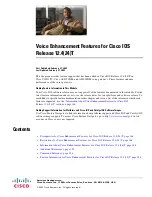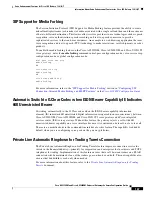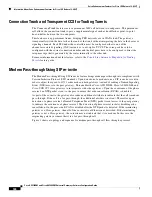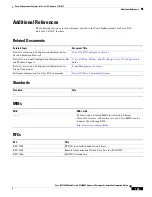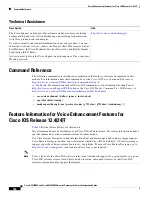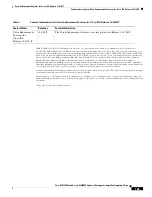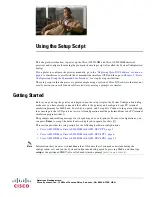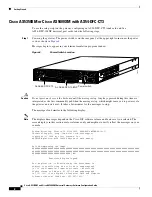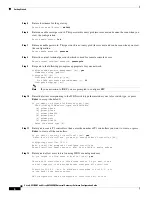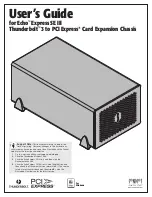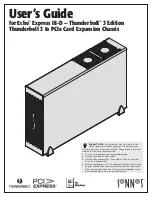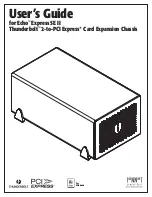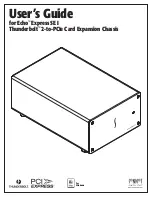
Voice Enhancement Features for Cisco IOS Release 12.4(24)T
Information About Voice Enhancement Features for Cisco IOS Release 12.4(24)T
188
Cisco AS5350XM and Cisco AS5400XM Universal Gateways Software Configuration Guide
Connection Trunk and Transparent CCS for Trading Turrets
The Connection Trunk feature creates a permanent VoIP call between two endpoints. This permanent
call allows the connection trunk to pass a supplemental signal, such as hookflash or point-to-point
hoot-n-holler, between the two endpoints.
This feature sets up permanent trunks, bridging PBX networks over a WAN cloud. The gateways
transparently switch the data to the other end of the trunk without interpreting the data in the bearer or
signaling channels. Each DS0 under the controllers must be configured either to one of the
channel-associated signaling (CAS) variants or to ext-sig for T-CCS. The voice ports have to be
configured with the correct connection number and the dial peers have to be configured to direct the
setup message that is generated by the router internally to the other end.
For more information about this feature, refer to the
Private Line Automatic Ringdown for Trading
Turrets
feature guide.
Modem Pass-through Using SIP re-invite
The Modem Pass-through Using SIP re-invite feature brings modem pass-through into compliance with
Session Initiation Protocol (SIP) standards. Upon detection of a modem tone, a SIP re-invite is sent in
order to adjust the speed to G.711 codec mode on both gateways (instead of sending a Named Signaling
Event (NSE) across to the peer gateway). This enables the Cisco AS5350XM, Cisco AS5400XM, and
Cisco VGD 1T3 voice gateways to interoperate with other gateways. Upon the occurrence of the phase
reversal, an NTE packet is sent to the peer to ensure that echo cancellation (ECAN) is disabled.
As part of the re-invite, the gateway also sends an additional attribute to indicate that the call is modem
pass-through. If the call is a fax pass-through, the additional attribute is not sent. Thereafter, upon
detection of a phase reversal, a Named Telephone Event (NTE) packet is sent across to the peer gateway
to indicate the occurrence of phase reversal. The detection of phase reversal initiates disabling echo
cancellation. On the peer side, ECAN is disabled after the NTE packet is detected. If the terminating
gateway is a Cisco gateway, then all of the re-invite would function as described. If the terminating
gateway is not a Cisco gateway, the re-invite may not indicate that it is a modem. In this case, the
originating gateway assumes that it is a fax pass-through call.
Figure 1 shows a topology and sequence for modem pass-through call flow through a protocol.












